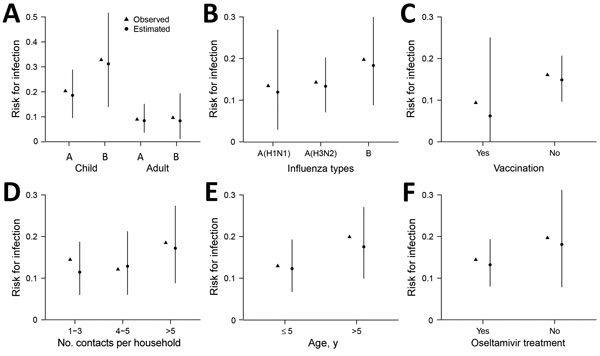Volume 24, Number 10—October 2018
CME ACTIVITY - Research
Influenza Transmission Dynamics in Urban Households, Managua, Nicaragua, 2012–2014
Figure 2

Figure 2. Observed and estimated risks for influenza virus infection of household contacts of index patients with reverse transcription PCR–confirmed influenza virus infections, by characteristic, Managua, Nicaragua, August 2012–November 2014. We estimated risk for infection by performing simulations using a multivariate model fitted to the collected data. Estimates represent 10,000 simulated epidemics in households with a structure that matched exactly that of the observed household. Points indicate medians, and bars represent the 2.5%–97.5% ranges of those 10,000 simulations. Risks for infection are shown for A) child and adult household contacts with influenza A virus infection or influenza B virus infection; B) virus type and subtype; C) vaccinated and nonvaccinated household contacts; D) household contact number; E) age group; and F) household contacts of index patients who were and were not treated with oseltamivir.